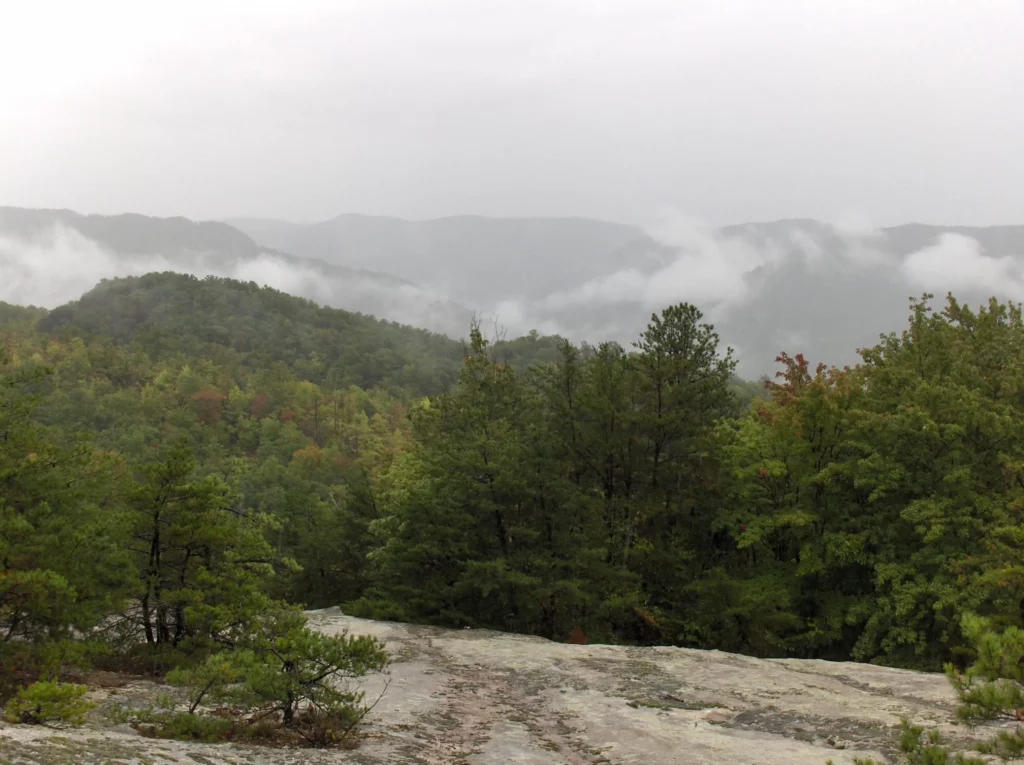Jenkins History part 1
Civil War veteran Captain Richard Broas of New York was not a geologist he was an engineer by vocation and yet he would make the most significant geological find in the state of Kentucky’s History on the headwaters of the Elkhorn Creek of The Big Sandy River in a little place soon to be known as Jenkins Kentucky…
Located in Letcher County on the Virginian border along US 23 is a sleepy little town called Jenkins ky. At first glance, Jenkins looks like any other coal camp town, however because of its history, topography, and geology Jenkins is a very unique place for quite a few reasons that do not come readily to the eye. It is nestled at the foot of the 126 mile long Cumberland or Pine Mountain and within its city limits is the headwaters for two rivers; Jenkins itself sits on the Headwaters of the Elkhorn Creek of the Big Sandy River however just across the rise as you travel to the top of the Cumberland Mountain is the Head of the Kentucky River.
Traveling on up the mountain one cannot escape the way that US 23 was cut into the Mountain itself. It is Officially recognized as a “Distinguished Geologic Site” by the Kentucky Society of Professional Geologists and is considered to be “one of the most remarkable exposures of rock in the entire eastern United States” the cut itself displays an extraordinary outcropping of nearly the entire section of Late Devonian, Mississippian & Early Pennsylvanian Stratigraphy.
At the top of the mountain is a natural Gap with deep historical and geological significance, it is officially known as a wind gap because no streams flow through it. The gap is now called Pound Gap however it was named the “Sounding Gap” on its discovery by Christopher Gist in 1751 but to the locals in the early 1900’s it was known as “Olé Cumberland Gap”… after its discovery it was used for decades by hunters including Daniel Boone as an entry point into Kentucky. And by the late 1700s, many pioneer settlers, especially from the western counties of Virginia, made Pound Gap their main point of entry into Kentucky because the two rivers at the foot of the mountain were used as highways leading to the heart of Kentucky or to the Ohio Valley.
Originally a series of Indian trails led to and from the gap, however, in 1817 construction had begun on the Mount Sterling-Pound Gap Road. The road was constructed and improved at state expense by local contractors using picks, shovels, and horse-drawn graders. Before the Civil War, the road had become Eastern Kentucky’s main highway. The road was primarily used in the Iron and Salt trade; however, it was also used to drive Horses, cattle, and hogs raised in Central Kentucky to the livestock markets in Abingdon, Lynchburg, and other Virginia towns.
During the Civil War, Pound Gap was used by both the Union and Confederate armies, The Kentucky 5th Infantry under Confederate Gen Humphrey Marshall built breastworks and a camp consisting of 60 log hut barracks, capable of accommodating about a dozen men each, along with 10 commissary buildings, and one large house used as the headquarters of Maj. J. B. Thompson the commandant of the post. On March 16th, 1862 General (and future president) James Garfield routed the rebels at the top of the mountain with a flanking maneuver and burned all the buildings after the battle. Later in 1864 during a raid toward central Kentucky, Confederate cavalry under John Hunt Morgan forced a small Union detachment from Pound Gap. Later, Morgan used the gap as an evacuation route out of the state.
However, all that aside the most unique thing about Jenkins KY is that in January 1910 it did not exist… Yet within 15 years it would go from a pasture with a few log houses to a Modern city of 10,000 people… This amazing story begins 133 years ago…
To be Continued…
Growing up I was taught to learn something new every day. Trying to live up to this axiom, I became a prolific and avid reader covering a wide range of topics and subjects. Although my personal studies have always been rather eclectic and included computer science, electricity, and electronics just to name a few. My favorite fields of study have always been Religion, Politics, and Economics, but my lifelong passion is the study of History and Anthropology.
I have also always been a bit of a dreamer and in the possession of a roving foot. As such my life has led me down paths not often traveled. My career has been long and varied and has included some strange ways to make a living, all legal by the way. But at last, all my passions and dreams have come together.
I have married the woman of my dreams. Together we have a wonderful home and we are both professional historians and spend our days in study.







